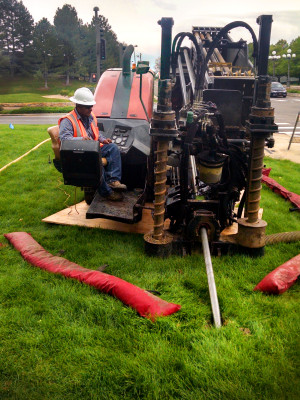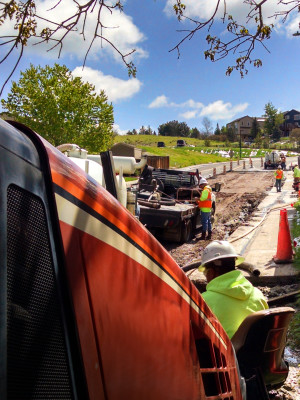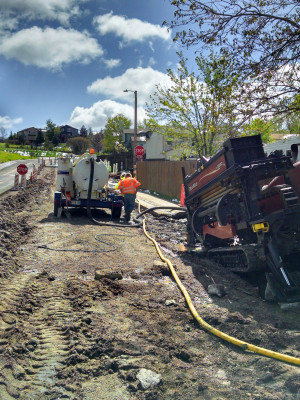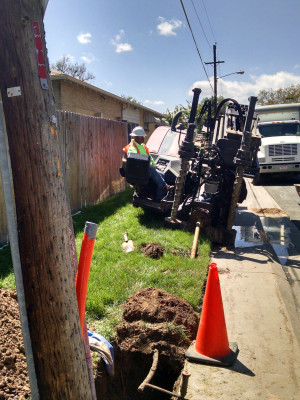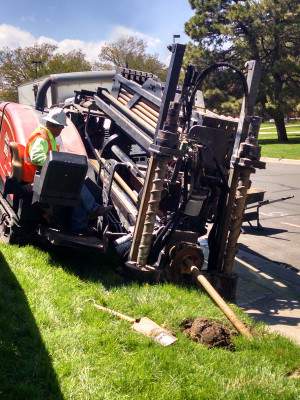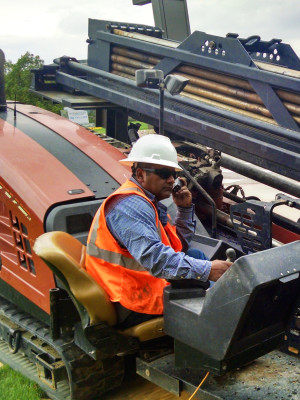HDD / Trenchless Technologies
HDD requires a small crew. The tracking operator continuously gathers data from a sonde, a radio transmitter located in the drill head just behind the drill bit. The sonde gathers data such as location, depth, roll angle, pitch, and temperature to help the drill operator adjust the direction of the bit and control the bore path.
To prepare for the installation, the drill operator calculates the route, or bore path, of the pipe along a shallow, underground arc that could be up to 50 feet deep. The drill operator must also estimate the load applied to the pipe during pullback and select an appropriate pipe for the project. As the drill operator bores the path, which can be up to 1,500 feet in length, a bentonite polymer and water mix is injected into the hole to stabilize the hole, remove cuttings, reduce torque, lubricate the pipe, and cool the bit.
When the pilot hole has been bored and the bit emerges in the exit pit, the drill bit is removed from the drill pipe. Then, the predetermined product/pipe, which could be plastic or metal and up to 24-inches in diameter, can be pulled back through the drilled space by being attached to the drill pipe. When necessary, enlargement of the pilot bore cross-section is accomplished by reaming. A reamer is placed on the end of the pipe string and pulled back to enlarge the borehole. Generally the reamed hole is about 50% larger than the pipe. At this time, SSDD owns equipment to outfit 11 drilling crews.

